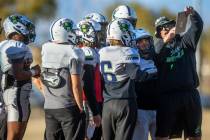It ain’t nothin’ till Art Santo Domingo calls it

There once was an umpire named Bill Klem, who, when baseball umps dressed like longshoremen, was behind the plate when a pitch was delivered with a windmill windup and the batter didn’t swing.
Klem hesitated. This was long before K-Zone technology. The batter turned to the man in blue. “So what is it, ball or strike?”
To which Bill Klem famously responded: “Sonny, it ain’t nothin’ till I call it.”
Up in the press box, the official scorer can relate. There are instances in a ballgame where it ain’t nothin’ until he, the scorer, calls it. Only then is it somethin’.
If you’ve been following baseball for any length of time, you’ve probably heard the stories, or maybe witnessed this yourself: A guy hits a ball that could be ruled a hit or an error. Subjective thought is applied. The scoreboard flashes “E.” The guy on base looks up to the press box and scowls.
I suspect Will Clark of the Giants (and for a little while of the Rangers, Orioles and Cardinals) might have done this, because Clark was always scowling at somebody.
When official scorers were beat reporters, scowling ballplayers would lie in ambush in the clubhouse. That ball they hit in the third inning? Too hot to handle. Should have been a single, not E-6.
Sometimes the scowlers, their cleats scraping on the concrete steps, would even storm through the stands after the final out was made to confront the official scorekeeper while he was still tabulating runs, hits and errors.
That rarely happens anymore, said Las Vegan Art Santo Domingo, a longtime and still part-time official scorer for the San Francisco Giants and Oakland A’s.
There’s an appeal process now. When a ballplayer thinks the official scorer has missed one, he notifies a designated person, usually his agent or his union rep. A ballclub also can initiate an appeal via one of the higher-ups in baseball operations. Or a bullpen coach, Art Santo Domingo said.
Replays and explanations are sent to baseball headquarters in New York.
“Joe Torre is the final guy,” Santo Domingo said of Major League Baseball’s Chief Baseball Officer.
It was Joe Torre who dropped the suspension on Chase Utley during last year’s playoffs. It is Torre who has the last say on whether it was a single or E-6.
“I haven’t had too many of those,” Santo Domingo said of official appeals.
The official scorer in Pittsburgh had one of those in May. Anthony Rizzo of the Cubs hit a knuckling line drive to center field that nearly screwed Andrew McCutchen into the turf. The ball ricocheted off McCuthchen’s glove. The scoreboard flashed “E.”
“Whoever scored that an error should be fired,” said McCutchen, who takes pride in his defense. You could almost hear his cleats scraping on the concrete.
The next day, McCutchen apologized to official scorer Tony Krizmanich. Rizzo’s knuckling line drive was changed to a single. But it was the Cubs who made the official request, on Anthony Rizzo’s behalf.
So that one wasn’t officially somethin’ until Joe Torre — or somebody in his office — called it.
Born in New York to Colombian parents, Art Santo Domingo, 77, still travels to the Bay Area to score around 25 games per season. He’s there now, with his sharpened pencils and his scorebook and his dog-eared copy of the “Official Baseball Rules” — and a stopwatch, to record the duration of replay challenges.
When we chatted, he was at Cashman Field, in the Club Level Restaurant. He was wearing a dark cap and a salmon colored shirt, like a scout might wear in spring training. The 51s were playing Albuquerque. He had a scoresheet in front of him and a pen in his pocket.
He said keeping track of runs, hits and errors and replay challenges helps him stay in touch with old friends and the game he grew up with (he saw his first one at the Polo Grounds in 1947). He gets paid $170 per game. Most games he scores blend into the background like a third base umpire.
Every now and then one stands out.
Santo Domingo, a longtime statistician who would become the team’s public relations director when Horace Stoneham owned the club (he counts Orlando Cepeda and Juan Marichal among his pals), remembers one such game: May 9, 2010. Mother’s Day. Pink bats and wristbands. That one stood out. That was the day Dallas Braden pitched a perfect game for the A’s against Tampa Bay.
Twenty-seven up, twenty-seven down. No tough chances for the official scorer.
It was just the 19th perfect game in baseball history.
You don’t score one of those very often, Art Santo Domingo said. So he went downstairs and gave his scorecard to the clubhouse kid for Dallas Braden to sign.
Braden refused to sign his scorecard.
E-1.
There went the perfect game.
Las Vegas Review-Journal sports columnist Ron Kantowski can be reached at rkantowski@reviewjournal.com or 702-383-0352. Follow him on Twitter: @ronkantowski












